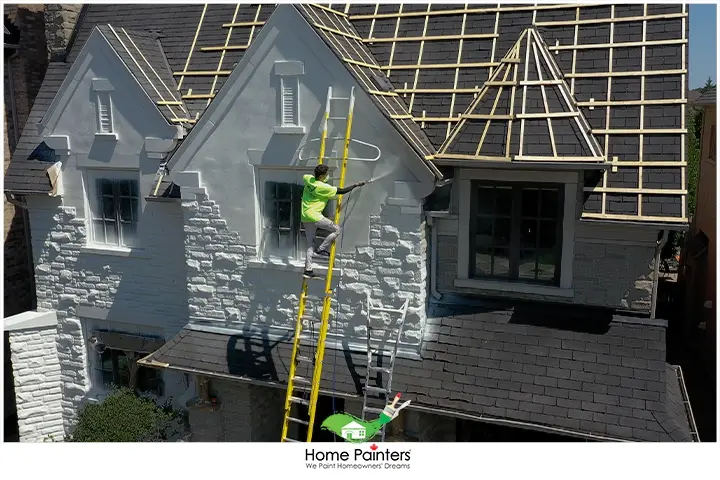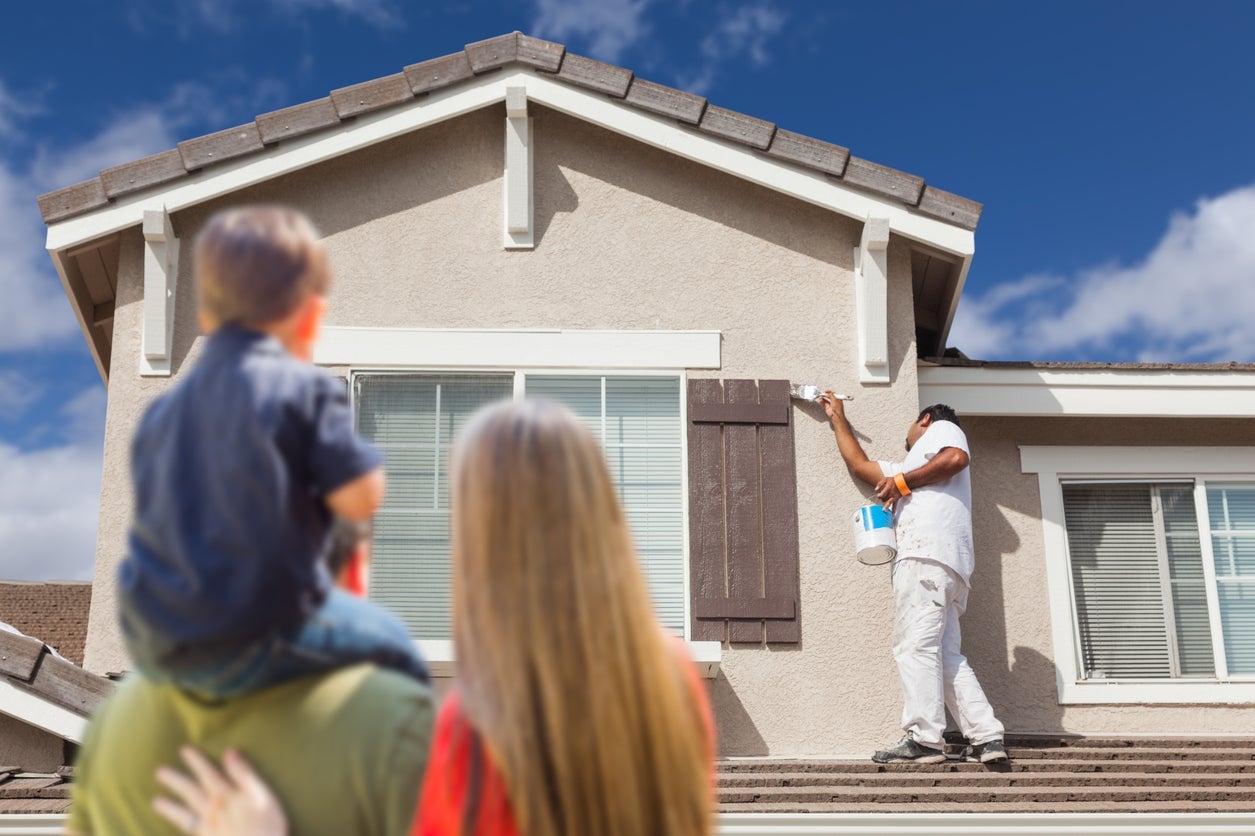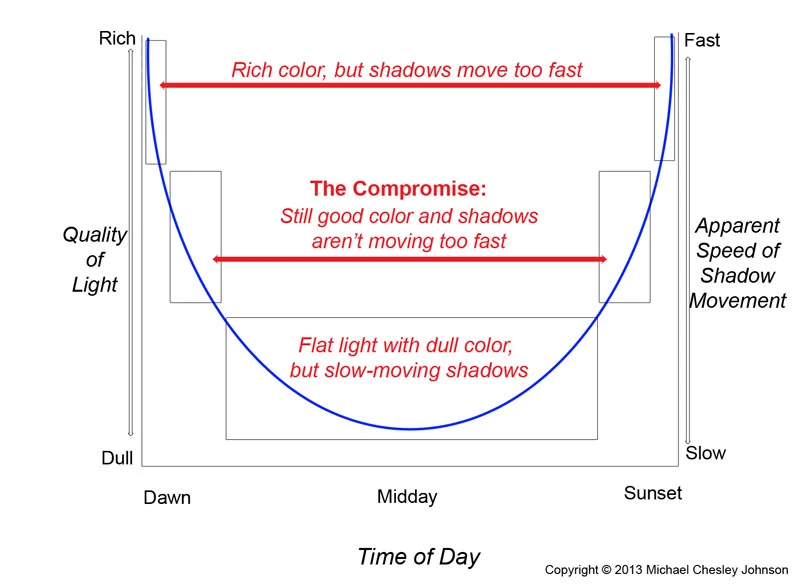The best time of day to paint outside is in the morning or late afternoon when the temperature is mild, and the sun is not too harsh. These times allow the paint to dry properly and reduce the risk of it blistering or drying unevenly.
Choosing the optimal time to paint outside can significantly impact the quality of your project. Factors such as temperature, humidity, and direct sunlight can affect the paint application and drying process. By considering the best time of day to paint outside, you can ensure a smoother and more successful painting experience.
Understanding the ideal conditions for outdoor painting can help you achieve a professional finish and protect your surfaces from potential weather-related issues. Let's explore the importance of timing when painting outdoors and how it can contribute to a successful and long-lasting paint job.

Credit: www.homepainterstoronto.com
Morning Painting
In this section, we will explore the advantages and considerations of morning painting, which is one of the best times of day to paint outside. Painting in the morning comes with its unique set of benefits and factors to consider. Whether you're a professional artist or a DIY enthusiast, understanding the advantages and considerations of morning painting can help you make the most out of your outdoor painting sessions.
Advantages Of Morning Painting
Painting in the morning offers several distinct advantages:
- Favorable Lighting Conditions: Morning light tends to be softer and more diffused compared to the harsh midday sunlight. This even lighting creates fewer shadows and reduces glare, allowing you to see true colors and details more accurately while painting.
- Cooler Temperatures: Painting in the morning allows you to take advantage of cooler temperatures compared to later in the day. This can be especially beneficial during hot summer months, preventing paint from drying too quickly and ensuring better control over brush strokes.
- Less Disturbance and Noise: Mornings are generally quieter with fewer distractions and disturbances. This tranquil environment helps you concentrate better on your artwork, fostering a more focused and immersive painting experience.
- Lower Humidity Levels: In many regions, humidity levels are lower in the morning, which can result in faster drying times for your artwork. This reduces the risk of paint smudging or blending unintentionally, allowing you to work with greater precision.
Considerations For Morning Painting
While morning painting offers numerous advantages, there are a few considerations to keep in mind:
- Early Morning Dew: In certain climates, early morning dew can be an issue for outdoor painting. The presence of moisture on surfaces might impact the adhesion and drying process of your paint. It's important to ensure that the surfaces are dry and free from dew before starting your painting session.
- Changing Lighting Conditions: Morning light changes relatively quickly as the sun rises, leading to variations in color intensity and shadow patterns. Be mindful of these changes and adjust your painting techniques accordingly to maintain consistency in your artwork.
- Time Constraints: Morning painting might not be feasible for everyone, especially those with busy schedules or responsibilities in the early hours. If you do not have the flexibility to paint in the morning, consider other favorable time slots for outdoor painting, such as late afternoon or early evening.
Afternoon Painting
Afternoon painting can be a favorable time to tackle outdoor painting projects. The sun is generally not as intense as it is during the morning hours, which can make for more comfortable working conditions. Additionally, there tend to be fewer weather disturbances during this time, resulting in more consistent and predictable conditions for painting.
Advantages Of Afternoon Painting
There are several benefits to painting in the afternoon, including:
- Comfortable working conditions due to less intense sunlight
- More predictable weather conditions
- Potentially improved drying time for the paint
Considerations For Afternoon Painting
While painting in the afternoon can offer advantages, there are some aspects to consider:
- Be mindful of the position of the sun to avoid casting shadows on the painting surface.
- Check the weather forecast to ensure there are no expected weather disturbances later in the day.
- Consider the temperature and humidity levels, as these can affect paint application and drying times.
Evening Painting
When it comes to painting outside, the evening can be a favorable time to pick up your brush and get to work. The softer, more diffused light during this time of day can create a calming atmosphere and make it easier to see imperfections and areas that may need touch-ups.
Additionally, the cooler temperatures in the evening can help the paint dry more evenly, resulting in a smoother finish.
Advantages Of Evening Painting
Painting in the evening offers several advantages:
- Soft, diffused light creates a calming atmosphere
- Easier to spot imperfections and areas needing touch-ups
- Cooler temperatures allow for more even paint drying
Considerations For Evening Painting
While evening painting has its benefits, there are a few considerations to keep in mind:
- Ensure proper lighting is available to see clearly
- Check the weather forecast to avoid potential issues with dew or moisture
- Be mindful of neighbors and local noise ordinances if using power tools or equipment
Painting In Different Weather Conditions
When it comes to painting outside, the best time of day depends on the weather conditions. Ideally, choose a time when the wind is calm, the temperature is moderate, and the sun is not too harsh to achieve the best painting results.
Sunny Weather
When the sun is shining brightly, it can be the perfect time to paint outside. The warmth of the sun helps the paint dry faster, allowing you to complete your project in a shorter time frame. Additionally, the bright sunlight can help you see any imperfections in your work, making it easier to touch up and achieve a smooth finish.
However, there are a few precautions you should take when painting in sunny weather. First, try to avoid painting in direct sunlight, especially during the peak hours of the day when the sun is strongest. Direct sunlight can cause the paint to dry too quickly, leading to uneven drying and potential cracking. Therefore, it's best to work in the shade or choose a time of day when the area you are painting is shaded.
Another consideration when painting in sunny weather is to be mindful of temperature. Hotter temperatures can also cause the paint to dry too quickly, which may result in a lesser quality finish. To avoid this, try to paint early in the morning or later in the evening when temperatures are cooler.
Cloudy Weather
Painting on cloudy days can provide ideal conditions for outdoor projects. Cloud cover helps to diffuse sunlight, reducing the risk of the paint drying too quickly. This slower drying time allows for better paint absorption into the surface and a smoother finish overall.
However, there are a couple of factors to keep in mind when painting on cloudy days. Firstly, if there is a chance of rain, it is better to avoid painting altogether. Moisture can affect the paint's adhesion and ruin your hard work. Secondly, it's important to pay attention to humidity levels. High humidity can also slow down the paint's drying process, potentially causing it to dry unevenly or develop a sticky surface.
Rainy Weather
Painting outdoors when it's raining is never a good idea. The moisture in the air and on the surfaces can prevent proper adhesion and drying of the paint, leading to a lackluster appearance and a shorter lifespan for your project. It's best to wait for a dry day to paint.
If you're in the middle of a painting project and caught in an unexpected rain shower, make sure to cover your painted surfaces with tarps or other waterproof materials to protect them from water damage. Once the rain has stopped and the surfaces are completely dry, you can then resume painting.
Factors To Consider For Outdoor Painting
When it comes to outdoor painting, various factors need to be considered to ensure a successful and long-lasting finish. Among these factors are temperature, humidity, and wind conditions. By understanding how these elements affect the painting process, you can choose the best time of day to paint outside.
Temperature
The temperature plays a crucial role in outdoor painting as it can significantly affect how the paint adheres and dries. Extreme temperatures can cause paint to dry too quickly or not adhere properly, resulting in a lackluster finish. Here are some things to keep in mind regarding temperature:
- Optimal temperature range for painting is typically between 50°F and 90°F.
- Avoid painting in direct sunlight or on surfaces that are too hot to touch.
- Colder temperatures can slow down the drying process, so ensure the paint has enough time to dry before any potential rain showers.
Humidity
Humidity levels can greatly impact the drying and curing time of paint. Excessive moisture in the air can cause the paint to take longer to dry and potentially lead to issues such as blistering or bubbling. Consider the following when painting outdoors:
- Optimal humidity range for painting is generally below 85%.
- Painting in humid conditions may require additional drying time between coats.
- Avoid painting on rainy or extremely humid days, as the excess moisture can negatively affect the paint's adhesion and overall finish.
Wind Conditions
Wind conditions can impact outdoor painting in several ways, primarily by affecting the drying time and spreading of paint particles. Here's what to consider when it comes to wind:
- Windy days can cause the paint to dry too quickly, potentially leading to an uneven or streaky finish.
- Strong gusts of wind can blow debris onto wet paint, causing imperfections.
- It is advisable to paint on calm days or during times when the wind speed is relatively low, ensuring the paint settles smoothly.
By taking into account the temperature, humidity, and wind conditions, you can choose the optimal time of day to paint outside and achieve a beautiful, professional-looking finish. Improper weather conditions can negatively impact the painting process, so make sure to plan accordingly and wait for the ideal conditions before embarking on your outdoor painting project.

Credit: orlandoresidentialpainters.com
Tips For Successful Outdoor Painting
When it comes to painting the exterior of your house or any other outdoor surface, there are certain factors you need to consider for a successful paint job. From preparation to safety precautions, every step plays a crucial role. To help you achieve the best results, we have compiled a set of tips that you can follow for successful outdoor painting.
Preparation Tips
Before you start painting, proper preparation is essential. Here are some tips to ensure the surface is ready for a fresh coat of paint:
- Clean the surface: Remove any dirt, dust, and debris from the surface using a power washer or a scrub brush with mild soap. This will create a clean canvas for your paint.
- Repair any damage: Check for any cracks, holes, or peeling paint on the surface. Use a filler or putty to repair any imperfections before painting.
- Sand the surface: If there are any rough spots or uneven areas, sand them down to create a smooth surface for the paint to adhere to.
- Protect surrounding areas: Cover any nearby plants, furniture, or windows with plastic or drop cloths to prevent them from getting paint splatters or spills.
Choosing The Right Paint
Selecting the right type and quality of paint is crucial for a long-lasting and visually appealing finish. Consider the following when choosing your paint:
- Exterior paint: Use a paint specifically formulated for outdoor use. These paints are designed to withstand the elements, such as UV rays and temperature fluctuations.
- Quality matters: Invest in a high-quality paint that provides good coverage and durability. This will ensure that your paint job lasts for years to come.
- Color choice: Consider the architectural style of your home and the surrounding environment when selecting a color. Opt for colors that complement the existing features and blend well with the surroundings.
Safety Precautions
Painting outdoors can involve some risks, so it is important to prioritize safety. Take the following precautions to ensure a safe painting experience:
- Protective clothing: Wear appropriate protective clothing, such as gloves, safety glasses, and a respirator mask, to protect yourself from paint fumes and potential skin contact.
- Avoid painting in extreme weather conditions: Avoid painting in extreme heat, direct sunlight, or when it's too cold. Optimal weather conditions can help the paint dry properly and adhere to the surface.
- Use ladders safely: If you need to use a ladder, ensure it's stable and placed on a flat surface. Always maintain three points of contact with the ladder and avoid overreaching.
- Ventilation: Ensure proper ventilation by opening windows and doors. This will help to dissipate any paint fumes and reduce the risk of inhaling harmful chemicals.

Credit: mchesleyjohnson.blogspot.com
Frequently Asked Questions For When Is The Best Time Of Day To Paint Outside
What Is The Optimal Time To Paint Outdoors?
The optimal time to paint outdoors is during the late morning or early afternoon when the temperature is mild and the sun is not too intense.
Can You Paint Outside In The Evening?
Yes, you can paint outside in the evening, but it is recommended to avoid painting in low light conditions as it can affect the color accuracy and overall finish of the paint.
Is It Better To Paint In Direct Sunlight Or Shade?
It is better to paint in the shade rather than direct sunlight as direct sunlight can cause the paint to dry too quickly, leading to brush marks and potential color inconsistencies.
What Weather Conditions Should Be Avoided When Painting Outside?
Avoid painting outside in extreme weather conditions such as high humidity, strong winds, or rain, as they can impact the paint's performance and result in an uneven finish.
Conclusion
Choosing the best time of day to paint outside is essential for achieving optimal results. By considering factors such as temperature, sunlight, and humidity, you can ensure that the paint job lasts longer and looks more professional.
Whether you prefer early morning or late afternoon, timing your outdoor painting projects can make a significant difference in the outcome. So, make sure to plan ahead and select the most suitable time to get the job done right. Happy painting!


0 Comments